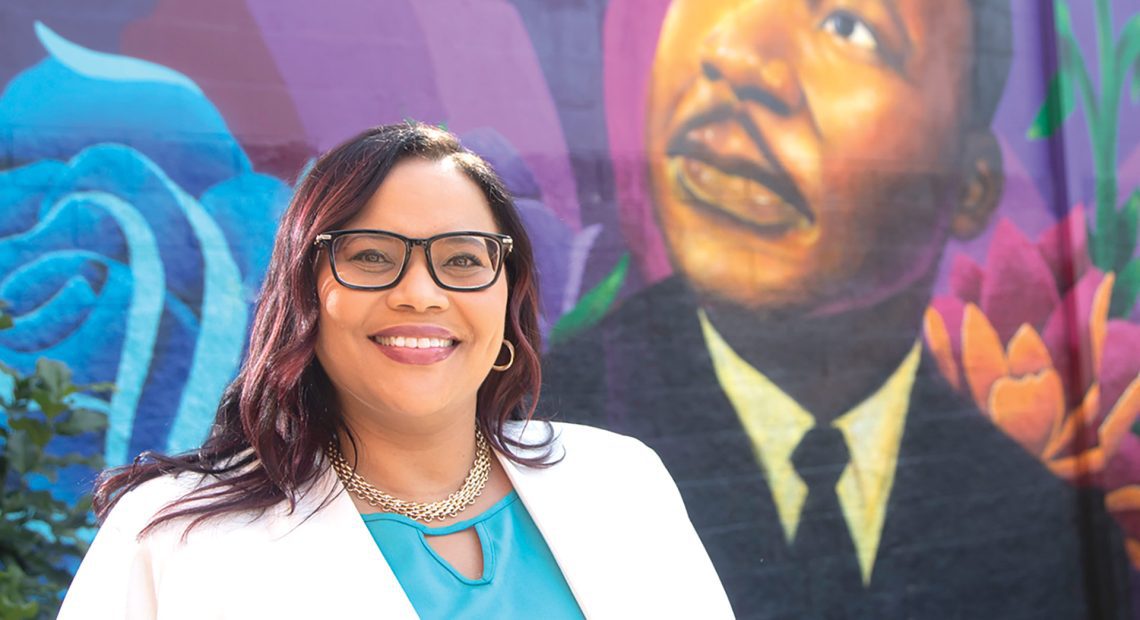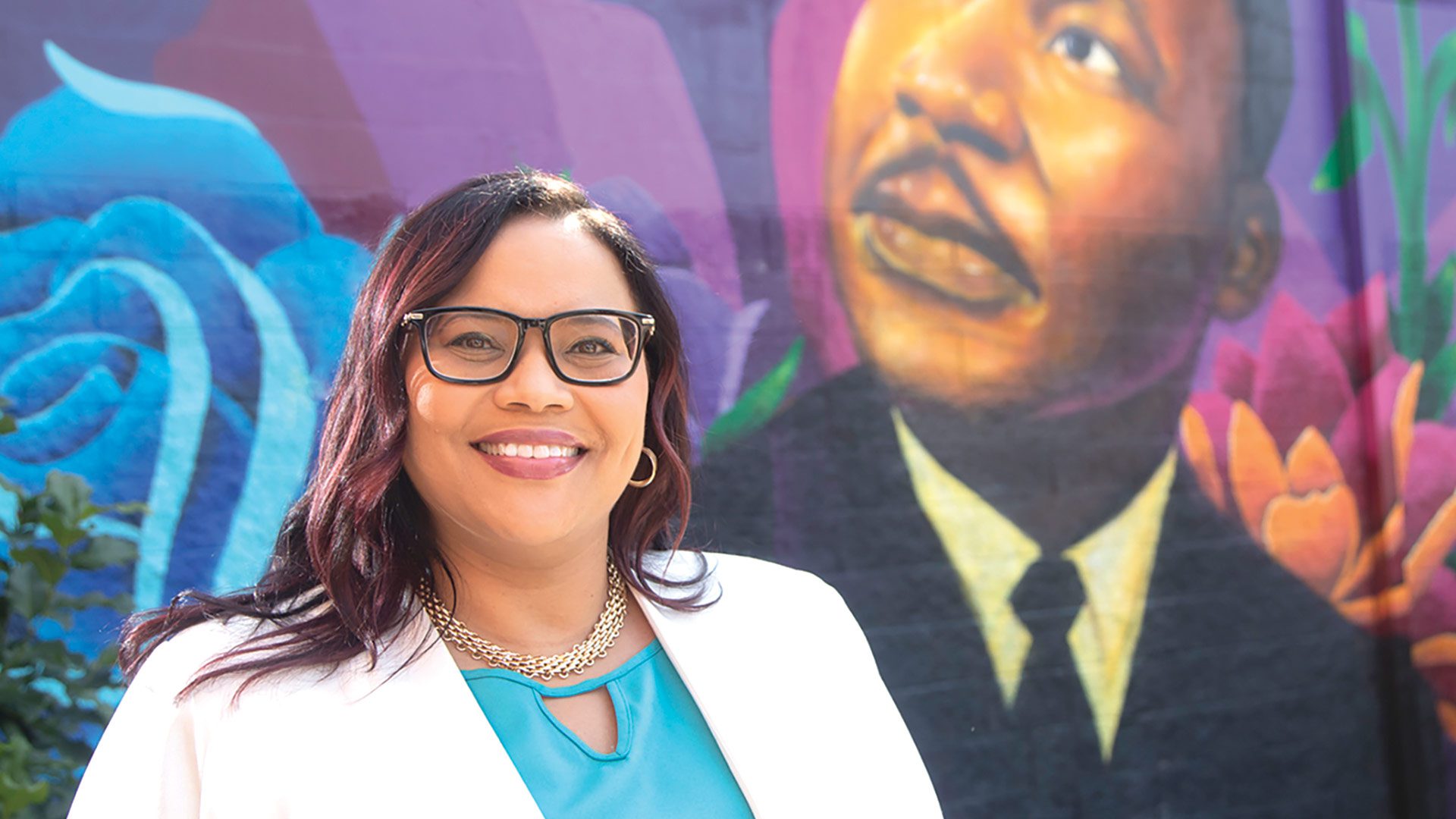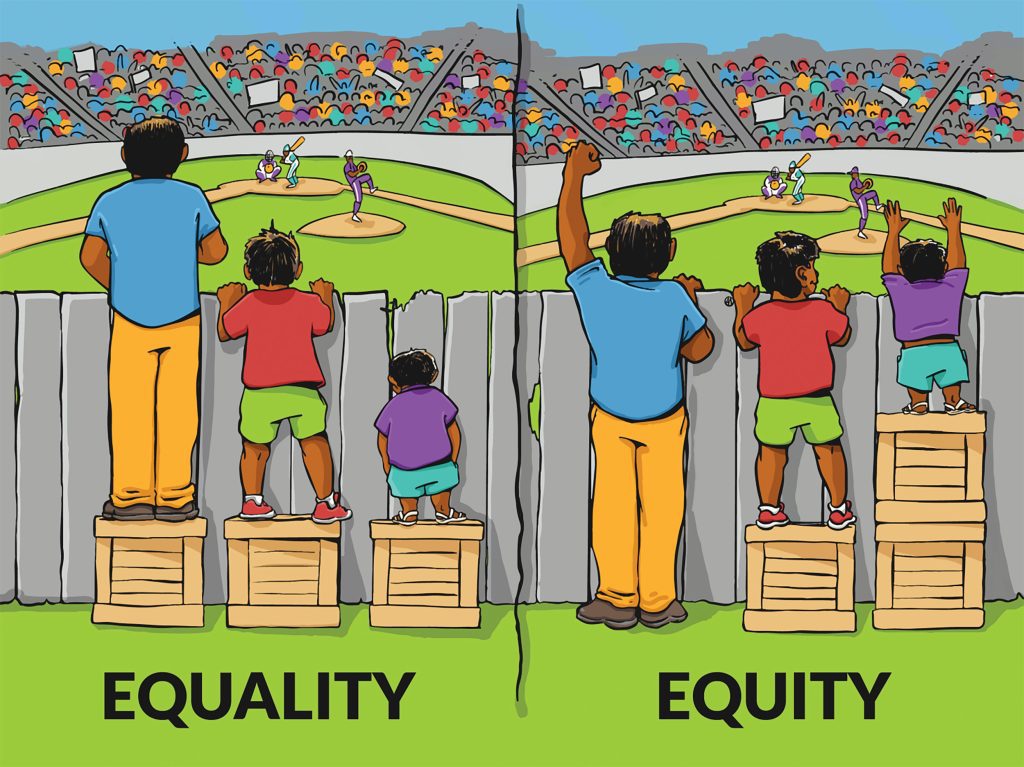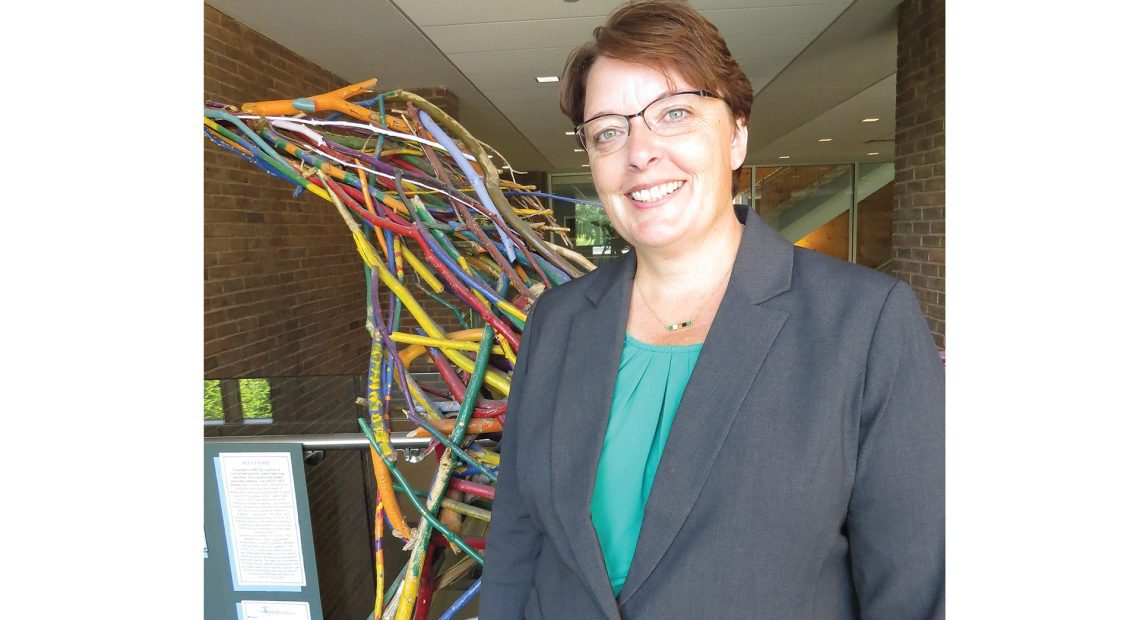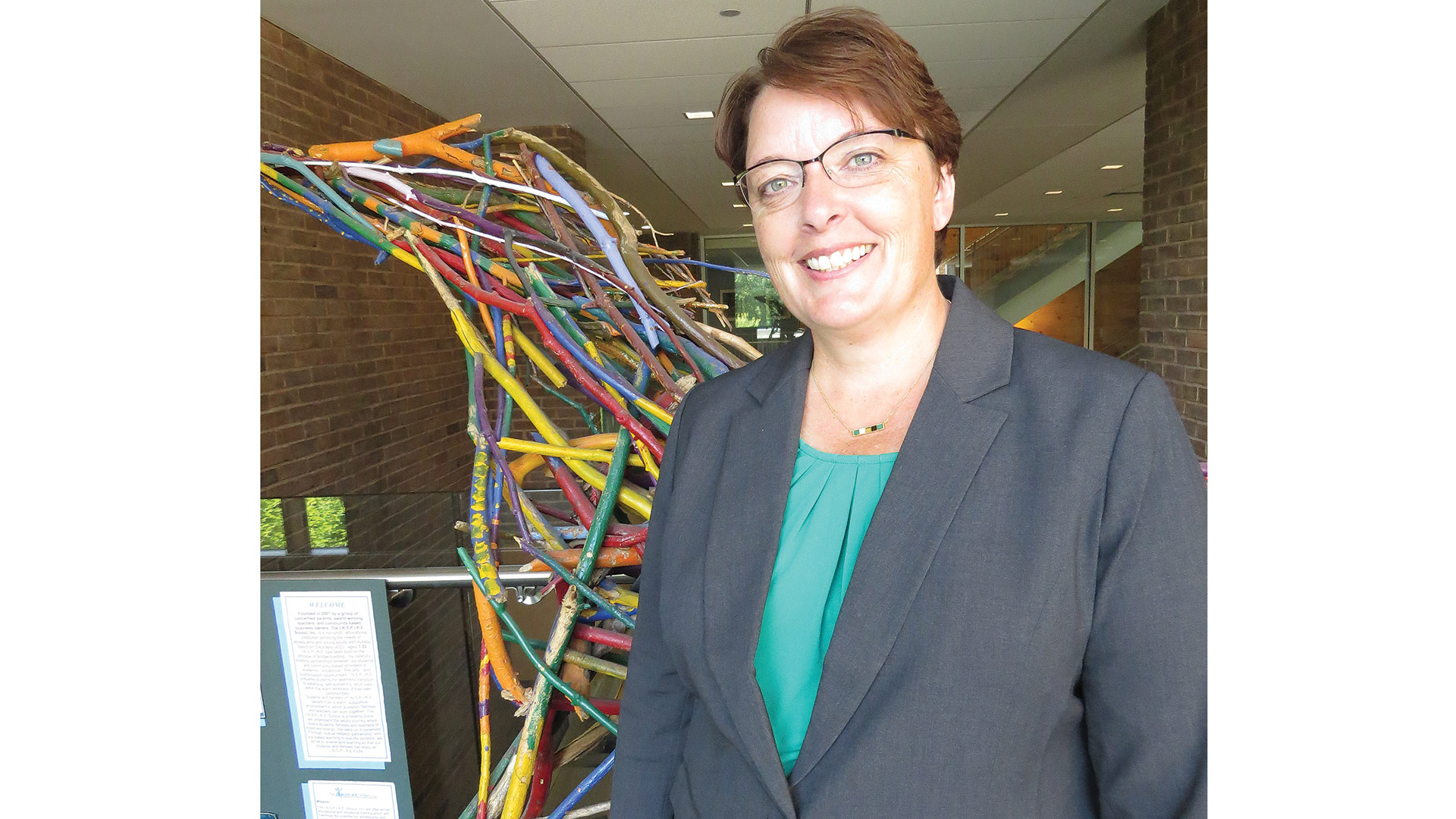A Critical Gap

Margaret Tantillo clearly remembers — honestly, who doesn’t? — the day Gov. Charlie Baker started shutting down the economy a year ago this month.
As the executive director of Dress for Success Western Massachusetts, an organization dedicated to the economic empowerment of women, she started calling participants in the days that followed, asking what issues they were having. One that kept coming up was access to the internet.
“If people are not connected, they’re going to be left behind in terms of being able to participate in the workforce,” Tantillo said.
So, identifying digital equity as connectivity, access to equipment, and the knowledge and ability to use software, Dress for Success enlisted a group of volunteers to form a digital task force, providing one-on-one coaching for about 40 women and providing more than 250 hours on the phone coaching.
“For the most part, we’re helping people operate on Zoom so they can participate in training and apply for jobs and interview virtually,” she said — just one way internet connectivity is a lifeline for people in these times.
Or, conversely, how lack of it can have a crushing impact.
It’s an issue that has received more attention during the pandemic, as tens of millions of Americans have struggled with remote learning, telehealth, and the ability to work from home because they lack access to fast, reliable internet service.
This ‘digital divide,’ as its commonly known, is not a new phenomenon, but the way COVID-19 has laid bare the problem is forcing lawmakers and others to see it in a new light.
“There are still communities in Western Mass. that don’t have high-speed internet access, or internet at all,” said state Sen. Eric Lesser, who has long championed this cause. “Frankly, in the year 2021, that’s a national embarrassment.”
State leaders haven’t ignored the issue, including tens of millions of dollars for infrastructure in bond authorizations over multiple budgets and economic-development bills, Lesser said, and Gov. Baker has set a goal to reach every community.

State Sen. Eric Lesser calls the lack of connectivity in some Bay State towns “a national embarrassment.”
“But, frankly, the fact that we have communities that don’t have broadband internet access raises very profound questions about how a high-tech state like Massachusetts, in this day and age, can allow that to happen.”
As president and CEO of the Western Massachusetts Economic Development Council, Rick Sullivan said the EDC has long taken the position — even before COVID-19 made it a more pressing issue — that the state needs to bring internet connectivity into every city and town. He noted that Gov. Deval Patrick’s administration started building the backbone, and the Baker administration has been diligent in making sure communities get financing to execute plans to bring broadband to their residents.
“For a lot of the smaller communities, that is probably the single biggest opportunity they have for economic development in the region,” Sullivan said. “People can choose to work from home, but they need to have the access that helps people choose to live in those communities, and it makes it easier to sell your properties, and that increases values in small towns.”
But even large cities have a digital divide, he added, which has been exposed to a greater extent by COVID-19.
Tantillo noted that, according to Census data from last year, 31% of households in Springfield have no internet access, and 37% don’t even have a computer. That means no remote work, no remote education, no telehealth, no … well, the list goes on.
These digital-divide issue arose during a public hearing last week in Springfield on the relicensing of Comcast. “Parts of Springfield need better connection,” Sullivan said. “The mayor was clear in his opening statements that this was an issue they would be taking a look at. But in every city and town, there are some connectivity issues that clearly need to be addressed.”
Learning Lessons
Yves Salomon-Fernández, president of Greenfield Community College (GCC), understood the need for connectivity before students began attending classes remotely last spring, but that move more clearly exposed the scope of the issue.
“The digital divide is real, especially in certain areas of Franklin County and in the hilltowns. Even in the city of Greenfield, there are places with spotty internet access, and with all of us being on Zoom right now, it slows down the connectivity we have for our faculty, staff, and students,” she added, noting that GCC had to purchase technology for many of them to teach and learn remotely.
“We also have students who are housing-insecure and may not have access to the internet. We gave them a hotspot if they have no cellphone service, and we have accommodated them on campus in various ways.”
She noted that even parts of the GCC campus contain dead zones where cellphones won’t work; the college has a phone tree set up for emergency alerts because cellular connectivity isn’t a given everywhere.
“If the college, a critical institution and a community asset, has these issues,” she said, “imagine what it’s like for small businesses and individuals.”
The flawed vaccine rollout in Massachusetts (see story on page 40) has laid bare another impact of the digital divide: access to vaccination appointments. Even if the state’s website wasn’t confusing or prone to crashing early on, Lesser said, it still wasn’t acceptable to make it the only option to sign up, which is why he and other legislators have pushed for a phone option, which was implented last month.
“You were pretty much shutting out a whole community of people, especially the 75-and-older category, when you set up a system that’s website-only,” he noted.
But vaccine distribution will be completed over the coming months; what won’t change are the other reasons people need to access the internet from home. Solving the issue won’t be easy with the patchwork of different levels of responsibility — towns, the state, FCC regulators on the federal level — when it comes to regulating contracts and service arrangements.
That’s why Lesser is high on municipal broadband, offered by a city to its residents like a public utility — an initiative that Chicopee and Westfield have undertaken, to name two local projects. “It really is like the water or electricity of the 21st century, that’s delivered by the city as well.”
More such municipal projects will also increase competition, he said, which could force other providers to lower their prices and boost speed.
Even people who have internet access through large companies often deal with higher costs than they can easily afford, Lesser said. “The costs are astronomical in the U.S. — people pay much more per month than in Europe or Asia.”
Therefore, “the state needs to look at ways to open the market more and create more competition,” he added, and that could simply entail putting more pressure on big internet companies.
“The problem is, internet service is left to the private sector when it’s a public good,” he said. “It doesn’t make economic sense for big companies to invest in infrastructure to get the internet turned on in small communities. The state may have to mandate they have to make those investments if they want to provide service for bigger locations.”
An Issue of Equity
Tantillo agrees with Lesser that society should be looking at connectivity as a utility and a basic, affordable service, but goes a step further.

Margaret Tantillo says the digital divide, if not rectified, could leave generations behind when it comes to economic opportunity.
“From an equity perspective, this disproportionately impacts women and people of color, so it’s also a social-justice issue,” she said. “But a crisis like this is also a big opportunity to be transformative. Springfield is considered the city of innovation. With a bold solution and reallocating resources, who knows what this community can transform into, if everyone has the opportunity to participate equally in online banking, telehealth, access to jobs, even to engage civically?”
Salomon-Fernández agreed. “In this day and age, it’s also an equity issue when you have people disconnected from the rest of the world. In the United States of America, and in one of the most technologically advanced states in the country, that’s a concern.”
And a particularly acute one, she added, in Franklin County, which contains some of the more rural and economically marginalized towns in the state. The impact isn’t just a problem in the present — it can have long-term effects.
“The world is increasingly globalized, and not being connected has negative repercussions on communities,” she added. “We are creating an underclass of people not able to take full advantage of economic possibilities through digitalization and connectivity. That has real effects, not just on teaching and learning, but also on the vibrancy of our whole region.”
The Federal Communications Commission’s latest broadband deployment report concluded that the “digital divide is rapidly closing.” But some voices in that agency are more hesitant.
“If this crisis has revealed anything, it is the hard truth that the digital divide is very real and very big,” FCC Commissioner Jessica Rosenworcel said in a statement released along with the report last month. “It confounds logic that today the FCC decides to release a report that says that broadband is being deployed to all Americans in a reasonable and timely fashion.”
The most recent available data from Pew Research, published in 2019, found that around 27% of Americans don’t have home broadband. That percentage is higher for Americans whose annual income is less than $30,000 (44%), black and Hispanic Americans (34% and 39%, respectively), rural Americans (37%), and those with a high-school education or less (44%).
Pew also reported, from a survey conducted last April, that 22% of parents — 40% in low-income families — whose children were learning remotely say they have to use public wi-fi because they lack a reliable internet connection at home.
Sullivan noted that some companies, like Comcast, and municipal utilities in cities like Holyoke and Westfield have made connectivity available to school children during the pandemic, which has been important.
“But going forward, it needs to be universal, and everyone needs to be able to have access,” he said. “It’s so important for education and for economic-development opportunities in every city and town. If we had that, combined with our quality of life and the cost of living we have here in Western Mass., we could be a place where people choose to live and work from home.”
Opening Eyes
Proponents of improved internet access in Massachusetts say COVID-19 certainly made the digital divide more evident, but it certainly didn’t cause it.
“I think it exacerbated that problem,” Tantillo said. “The digital divide has now become a chasm. And if we don’t solve it, generations will be left behind. I think people are more aware of that, so people are more invested in solving it.”
That awareness is critical, she said, in generating the kind of momentum that will move decision makers.
“It’s the plumbing of the 21st century, and the pandemic showed this,” Lesser said. “Vital services like education and, increasingly, healthcare, with the rise of telehealth, are critical services delivered to people through the internet. We’ve operated through a prism of treating this like DirecTV or cable television, like entertainment, an extra in your house. And that’s just not the case anymore.”
For many Americans, Tantillo added, connectivity is something to be taken for granted, but more people are realizing that’s just not the case.
“If I’m sitting there with my laptop, I’m not thinking about the 50,000 residents in Springfield without connectivity — I’m thinking about my own needs. But this is being exposed on a broader level.”
She understands — and has expressed — the negative impact of not being connected, but prefers to couch the issue in a more hopeful, visionary way.
“We know what the ramifications are if we don’t fix the problem of the digital divide,” Tantillo said. “But here’s the amazing thing: we don’t know all the opportunities and how we can transform communities when we fix this and provide digital equity for everyone.”
Salomon-Fernández certainly hopes that happens.
“I think the pandemic has laid bare a lot of the fissures, the inaccessibility and inequity in our democracy, and also the ability of different folks in different regions to reach the same levels of economic prosperity,” she said. “While many people may not have been concerned about them pre-pandemic, it’s obvious now that the cracks are wide open. Hopefully it’s an opportunity for us.”
Joseph Bednar can be reached at [email protected]




